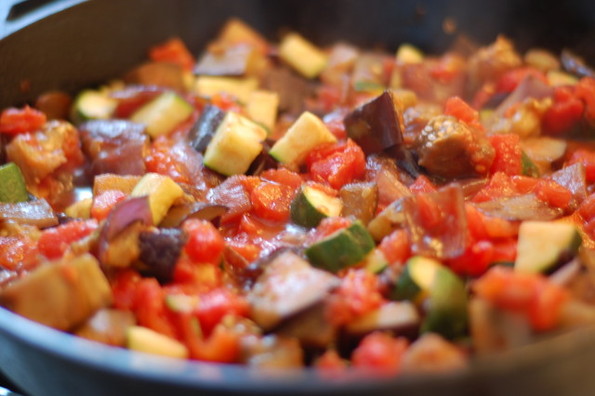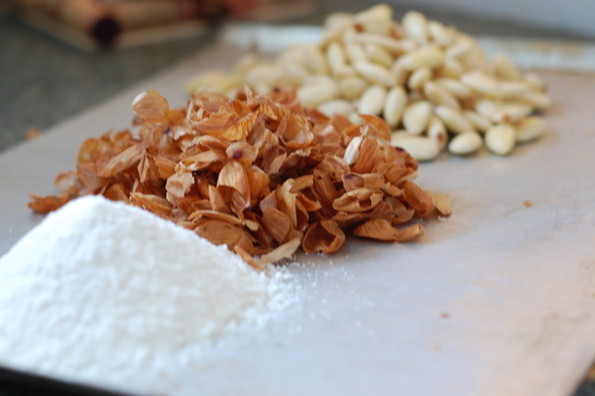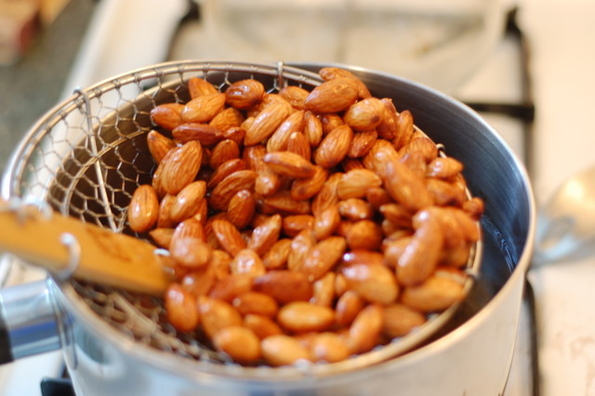Ratatouille is French for “stew made of all the vegetables that you have in your refrigerator” (I think, but don’t quote me). Traditionally, it’s made with eggplants, onions, tomatoes, garlic, zucchini, bell peppers, carrots and spices like bay, basil, oregano and marjoram. With that many ingredients, its more than open to improvising, especially when you have a refrigerator full of veggies that you’d like to use up.
I found myself last week staring at a few eggplants, onions and zucchini threatening to go bad in my crisper drawer. I also had a bunch of pre-cooked whole grains (barley, wheat berries and rice) that were looking for an interesting complement. Bam! Ratatouille seemed like the perfect solution to my dinner quandry.
If you add other vegetables, like carrots, just put them in the pan according to how long they’ll take to soften up (a good rule of thumb is to start with the hardest vegetable — so carrots would probably go in before eggplant). You can definitely make a big batch of this as well — it’ll keep for a few days, and goes great with pasta, chicken, rice or grains or alone as a side dish.
Originally posted May 17th, 2010
Ratatouille
Ingredients
- 1 large or 2 small/medium eggplants
- 1 medium onion
- 2 zucchinis
- 1-2 cloves garlic
- 1 can diced tomatoes or 1-2 fresh tomatoes, diced
- 1 tsp basil
- 1/2 tsp oregano
- 1 tsp parsley (fresh if possible)
- Olive oil
- Salt
Sautee the onions in olive oil until they begin to soften and become translucent. Add in the eggplant and cook until it shrinks a bit and starts to brown. Add in zucchini and cook for another 2 minutes. Add in tomatoes, herbs and salt to taste. Cook until entire mixture is soft. Serve with pasta, chicken, grains, bread or as a side dish.


